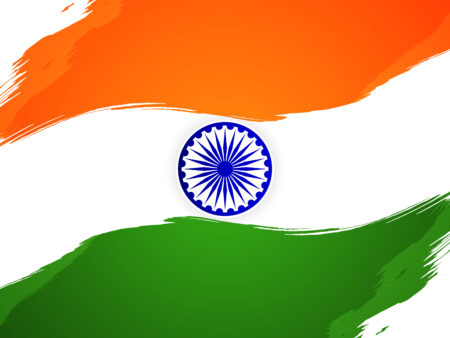

Cricket is a remarkable sport in India. The sport has remained a passion for millions of Indians and to cater to the growing demand, numerous cricket stadiums have been built throughout the country over the years. A good example of such is Sardar Patel Stadium, popularly known as Motera Stadium, based in Ahmedabad, Gujarat. Not only is it the largest stadia in India, but in the entire world with a capacity of 110,000 spectators. We will focus on the history, construction and unique features of Sardar Patel.
A Brief History of Cricket in India
Cricket in India is old. It started in the 18th century and was introduced by the Britons. In the beginning, it was played predominantly by British officers and aristocrats, but soon enough, Indians too started showing an interest in the sport. The first recorded cricket match in India took place in 1721 between sailors from the East India Company. As time passes, Cricket has proved to be a preference for many, in and out of India. In 1932, India joined the International Cricket Council (ICC) for its increased activity in the game.
The Origins of Cricket in India
How cricket started in India is still not clear up to date. While many hold that the sport was still going on in India as early as the 16th Century, some firmly believe that it came with the European sailors. For this reason, cricket attracted many players, resulting in the establishment of the first Indian cricket team in the 19th century.
In the beginning, people believed that cricket was a game of a selected few in society, mostly the wealthy. However, it has been gaining popularity and the masses have embraced it fully. The sport was played in schools and colleges, and local cricket clubs sprouted up across the country. Instead of being a game for a select few, it became a sport for everyone.
The Growth and Popularity of the Sport
Over time, the game has inherently grown to be part of the way of life of the Indian citizens, giving its name a huge elevation. The Indian cricket team achieved its first Test victory in 1952 against England at Chennai. This win formed a great achievement, in Indian cricket history, propelling India to be a powerhouse of the sport.
When India scooped the World Cup in a hotly contested final, a moment of greatness for the country was stamped. The Cricket team of India, under the leadership of Dev Kapil, beat West Indies mercilessly to emerge the champions. This one-time intentional victory triggered charges cricketing revolution in India, giving the sport sizeable fame that was to live far and beyond imagination. In 2011 for a second time, the Indian cricket team emerged top of the World Cup, confirming that indeed, they were the best cricket team in the world.
In the present day, India is a powerhouse of cricket sport, making the Indian Premier League one popular league that commands attention globally. Through the IPL, both young and talented cricket players have obtained a platform to showcase their skills. Many Indians love the sport, and this has resulted in mushrooming of cricket stadia in the country.
The Making of the Largest Cricket Stadium
The Vision and Planning
The Sardar Patel Stadium, based in Ahmedabad, Gujarat, is the biggest cricket stadium globally. The honourable thought of erecting such an awe-inspiring stadium was conceived by the Gujarat Chief Minister, Hon. Narendra Modi. He envisioned a stadium that would not just be the largest in India but also a global landmark. To turn this vision into reality, Modi hired Populous, a renowned architecture firm that has designed several iconic stadiums worldwide.
Populous, which has designed stadiums like the London Olympic Stadium, the Yankee Stadium, and the Wembley Stadium, was tasked with designing a stadium that would be a marvel of engineering and design. The selected architects took a while to study the site, the area climate, and the local culture to eventually develop a matching design that would be aesthetically appealing and highly functional.
Construction and Challenges
The construction of Sardar Patel Stadium commenced in 2016, taking 3 years to complete. The stadium is built where the old Sardar Patel Stadium was, and this means the old stadium had to be brought down first. The current stadium is put up on 63 acres piece of land and it accommodates up to 110,000 spectators.
But the project did not miss its fair share of challenges. Being built at the heart of a city that bustles with activity daily was a full nightmare for building logistics. The architects had to ensure that the stadium did not disrupt the flow of traffic in the area. Additionally, the stadium sits on the banks of the Sabarmati River, which posed a significant challenge in terms of drainage and flood prevention. The architects had to come up with a design that would ensure that the stadium remained safe and functional even during the monsoon season.
Despite these challenges, the architects and builders persevered, and the stadium was completed in February 2020, just in time for a high-profile visit from the US President, Donald Trump. The stadium’s inauguration was attended by several dignitaries, including the Indian Prime Minister Narendra Modi.
Key Features and Facilities
The Sardar Patel Stadium boasts state-of-the-art facilities, including VIP lounges, media centres, practice arenas, and more. Due to its seating design, no viewer is obstructed, giving them a clear view of the game from the outfield and the infield. The stadium’s roof is retractable, providing flexibility in case of changing weather conditions. The roof is made of a lightweight material that allows natural light to filter through, creating a unique and vibrant atmosphere inside the stadium.
The stadium also has several other unique features, including a cricket academy, a clubhouse, and a museum showcasing the history of cricket in India. The cricket academy is designed to provide world-class training facilities to young cricketers and help them hone their skills. The clubhouse is a luxurious space where members can relax and socialize, while the museum is a tribute to India’s rich cricket history.
The Sardar Patel Stadium is not just a stadium; it is a symbol of India’s passion for cricket and its commitment to excellence. It is a testament to what can be achieved when a vision is backed by determination and hard work.
The Sardar Patel Stadium: A Closer Look
The Sardar Patel Stadium, also known as the Motera Stadium, is a cricket stadium located in Motera, a residential area in Ahmedabad, Gujarat. The stadium, built in 1982, is owned by Cricket Association. To keep improving its seating capacity and other facilities, this stadium has experienced several renovations this far.
Location and Accessibility
The stadium’s location in a residential area has raised concerns about traffic congestion and noise pollution in the surrounding areas. To address these concerns, the Gujarat Cricket Association has taken several measures, such as providing shuttle services from designated parking areas and implementing traffic control measures on match days.
The stadium is easily accessible by road and rail, making it convenient for fans to attend matches. The nearest railway station is Sabarmati Junction, which is located just 5 km away from the stadium. The stadium is also well-connected to the city’s bus network, with several bus routes passing by the stadium.
Seating Capacity and Record Attendance
With a seating capacity of 110,000, The Sardar Patel Stadium becomes the biggest in the world. The stadium broke the record for the most substantial cricket stadium in the world when it was inaugurated in February 2020. The previous record was held by the Melbourne Cricket Ground in Australia, with a seating capacity of 100,000.
The stadium’s seating arrangement is designed to provide an excellent view of the pitch from every seat. It has four stands: Sachin Tendulkar, Kapil Dev, Sunil Gavaskar and Virender Sehwag, all named after prolific cricketers.
Notable Matches and Events
Although the Sardar Patel Stadium was inaugurated recently, it has already hosted several high-profile cricket matches. In February 2021, the stadium hosted the third and fourth Test matches between India and England. The stadium has also been chosen as one of the venues for the 2021 Indian Premier League.
The stadium’s first international match was played in 1984, between India and Australia. This opened opportunities for the stadium to host several other global matches, including the 2011 cricket World Cup quarter-finals.
The stadium has also been used for non-cricket events, such as political rallies and concerts. In 2020, the stadium hosted the ‘Namaste Trump’ event, which was attended by US President Donald Trump and Indian Prime Minister Narendra Modi.
In conclusion, the Sardar Patel Stadium is a world-class cricket stadium that has made a significant contribution to the development of cricket in India. With its excellent facilities and record-breaking seating capacity, the stadium is sure to attract cricket fans from all over the world for years to come.
Comparing India’s Top Cricket Stadiums
Cricket is a sport that is loved and followed by millions of people in India. There are several cricket stadiums here, making it a major host of cricket tournaments. In this section, we will compare three of India’s top cricket stadiums – Eden Gardens in Kolkata, M. Chinnaswamy Stadium in Bengaluru, and Wankhede Stadium in Mumbai.
Eden Gardens, Kolkata
The Eden Gardens Stadium is one of the oldest cricket stadiums in India and is located in the heart of Kolkata. The stadium has a seating capacity of 68,000 and has hosted several high-profile cricket matches, including the 1987 and 2011 World Cup finals.
The stadium has undergone several renovations over the years to improve its facilities and ensure the comfort of the spectators. The stadium is also the largest cricket stadium in India before the construction of the Sardar Patel Stadium. The stadium is a must-visit for any cricket fan visiting Kolkata.
M. Chinnaswamy Stadium, Bengaluru
The M. Chinnaswamy Stadium is situated in Bengaluru and has a seating capacity of 40,000. The stadium has hosted several international cricket matches and is home to the Royal Challengers Bangalore, a popular IPL team. The stadium is known for its lush green outfield and has been praised for its excellent facilities.
The stadium is named after M. Chinnaswamy, who was the president of the Board of Control for Cricket in India (BCCI) from 1977 to 1980. The stadium has also been a witness to some of the most memorable moments in cricket history, such as Javagal Srinath’s hat-trick against Australia in 1998 and Sachin Tendulkar’s 50th Test century in 2010. The stadium is a must-visit for any cricket fan visiting Bengaluru.
Wankhede Stadium, Mumbai
The Wankhede Stadium is located in Mumbai and is one of India’s most iconic cricket stadiums. The stadium has a seating capacity of 33,108 and has hosted several high-profile cricket matches, including the 2011 World Cup final.
The stadium is famous for its sea-facing location and has been praised for its excellent facilities and crowd management. The stadium has undergone several renovations over the years to ensure the comfort of the spectators and to keep up with the changing times. The stadium is a must-visit for any cricket fan visiting Mumbai.
In conclusion, India has some of the most iconic cricket stadiums in the world, and each stadium has its unique charm and history.
Conclusion
The Sardar Patel Stadium is a testament to India’s passion for cricket and its commitment to creating world-class infrastructure. The stadium’s construction was a massive undertaking, and it now stands as a shining example of India’s capabilities. As cricket continues to captivate millions of Indians, the Sardar Patel Stadium will remain a hallmark of the sport’s growth and popularity in the country.











